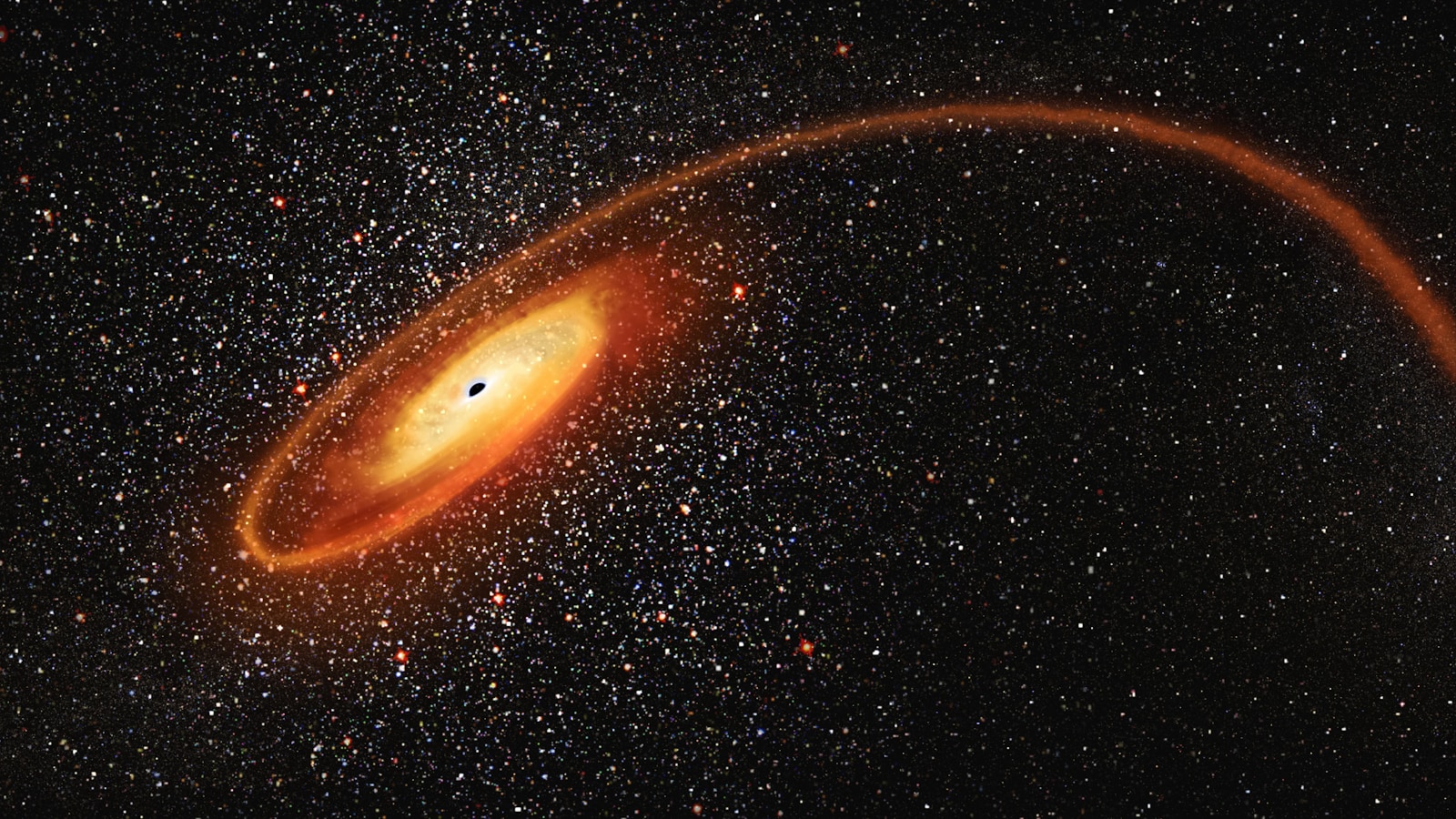Key Takeaways
• Rogue planet Cha 1107-7626 lies 620 light-years away and roams freely.
• It’s swallowing gas and dust at six billion tons each second.
• Strong magnetic fields and water vapor mirror young stars.
• This discovery blurs lines between planets and stars and upends theories.
Astronomers were stunned when they spotted a rogue planet acting like a newborn star. This object, named Cha 1107-7626, drifts alone in space. Unlike regular planets, it pulls in gas and dust at an extreme rate. In fact, it gains six billion tons every second. That’s faster than anything we’ve ever seen for a planet. As a result, experts must rethink how worlds form and evolve.
The Surprising Behavior of a Rogue Planet
Normally, planets grow by collecting leftover material around a star. However, Cha 1107-7626 shows no parent star. Instead, it feeds on its own dusty disk. Moreover, this rogue planet emits water vapor from heated dust. It also produces outflows of gas guided by magnetic fields. These traits usually belong to young stars, or protostars, rather than planets.
Why the Rogue Planet Feeds Like a Star
First, the rogue planet’s intense gravity pulls in gas and dust rapidly. Additionally, magnetic fields channel material toward the object’s poles. Consequently, matter spirals into the planet in jets, much like protostars do. For instance, telescopes detected glowing gas outflows traced by strong magnetic lines. This process heats dust grains enough to release water vapor into space.
How This Discovery Challenges Planet Formation Theories
Traditionally, planets form in disks around newborn stars. In contrast, stars assemble by collapsing gas clouds under gravity. Yet Cha 1107-7626 shows traits of both. Therefore, it questions whether rogue planets form like stars or like planets. If planets can gather mass so fiercely, definitions may need changing. This finding forces astronomers to revisit models of both stellar and planetary birth.
Magnetic Fields: A Stellar Signature
Stars often have powerful magnetic fields that shape gas flows. Surprisingly, this rogue planet also sports such fields. These magnetic lines guide inflowing material and drive jets outward. Without a star’s energy, it seems this object still generates enough power internally. As a result, gas speeds reach hundreds of kilometers per second.
Signs of Water Vapor in Space
One of the most exciting observations is water vapor around Cha 1107-7626. Heated dust releases water molecules into its surroundings. This is unusual for a planet, but common near young stars. Consequently, scientists now wonder if other rogue planets might also hold water in unexpected forms.
The Hunt for More Rogue Planets
Until now, only a few rogue planets were confirmed. However, this discovery proves they can show vivid starlike activity. Therefore, astronomers plan to use new telescopes to search for others. They will look for similar glowing disks and magnetic-driven jets. This could reveal a hidden population of star-like wanderers.
Implications for Planet and Star Definitions
If planets can mimic stars, where do we draw the line? Some researchers argue we may need a new category. Perhaps objects that feed on gas like stars deserve their own class. Meanwhile, others say the current definitions still work if we adapt growth scenarios. Either way, this rogue planet forces a lively debate in astronomy.
Tools That Made the Discovery Possible
Advanced space telescopes and infrared instruments spotted the glowing disk around Cha 1107-7626. These devices can see heat and dust emissions millions of times fainter than starlight. Additionally, spectrometers measured water vapor signatures. Without these cutting-edge tools, the rogue planet’s strange behavior would have passed unnoticed.
What Comes Next for Rogue Planet Studies?
Astronomers hope to map the planet’s magnetic field in detail next. They also plan to monitor its feeding rate over months. This will show if the gas flow remains steady or changes over time. Moreover, comparing data from other rogue planets will help establish patterns. As a result, researchers aim to build a clearer picture of these mysterious wanderers.
Rogue Planet or Star in Disguise?
Ultimately, Cha 1107-7626 sits on the boundary between planets and stars. Its rapid gas accretion and magnetic signs blur the classification lines. Nonetheless, the term “rogue planet” still fits because it lacks sustained nuclear fusion. Still, its starlike traits may force scientists to rethink how we label cosmic objects.
Looking Ahead: Redefining Cosmic Origins
In the next decade, more objects like Cha 1107-7626 may emerge. Each new find will add clues about how planets and stars form. Consequently, our understanding of cosmic evolution could shift dramatically. While definitions may change, the thrill of discovery will remain as we unravel the universe’s secrets.
Frequently Asked Questions
What is a rogue planet?
A rogue planet drifts through space without orbiting a star. It formed either in a disk around a star or directly from a gas cloud.
How was Cha 1107-7626 detected?
Astronomers used infrared telescopes to spot its glowing dust disk. Spectrometers revealed water vapor and magnetic outflows.
Why is its gas feeding rate surprising?
Planets usually grow slowly by gathering leftover material. This rogue planet gains six billion tons of gas each second, a rate seen in young stars.
Could other rogue planets act like stars?
Possibly. This discovery suggests more rogue planets may show starlike behavior. Future observations will reveal if Cha 1107-7626 is unique or part of a larger group.

